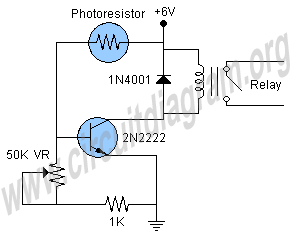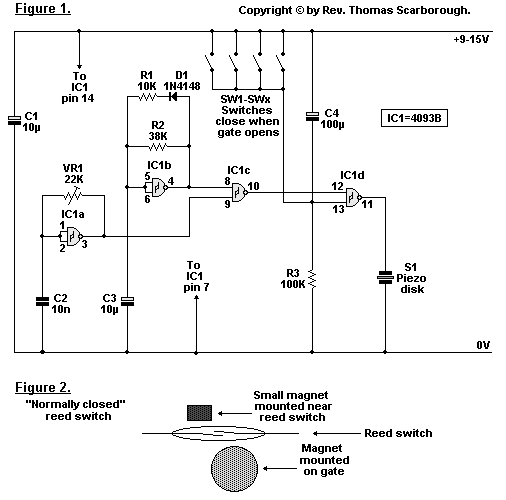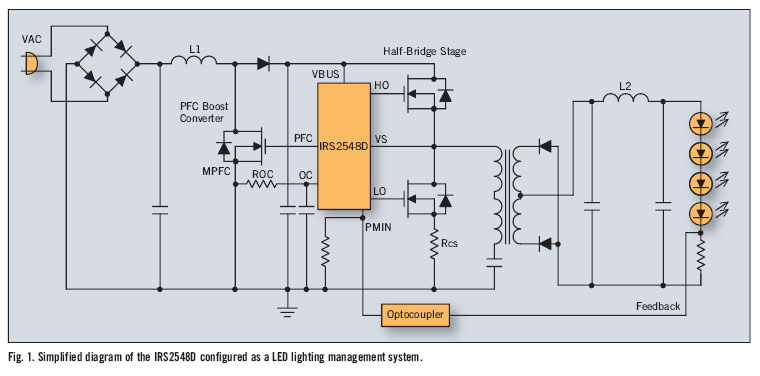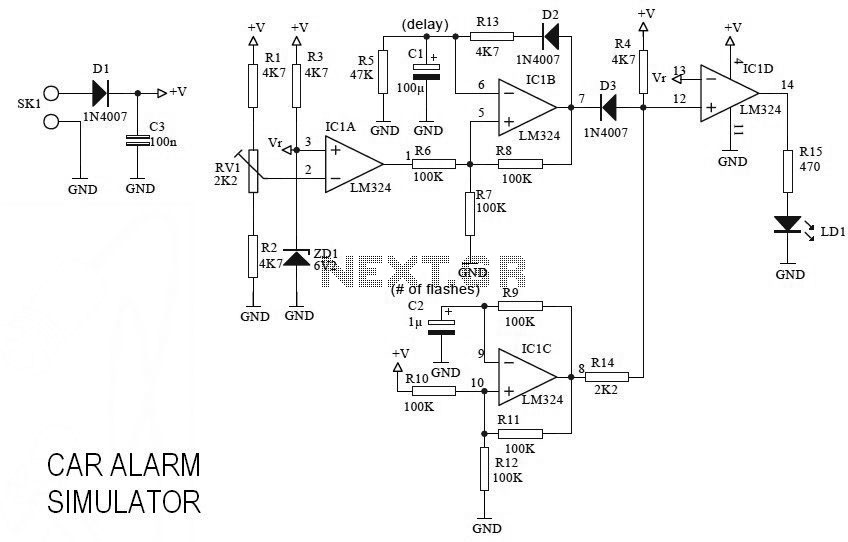
Emergency Light & Alarm
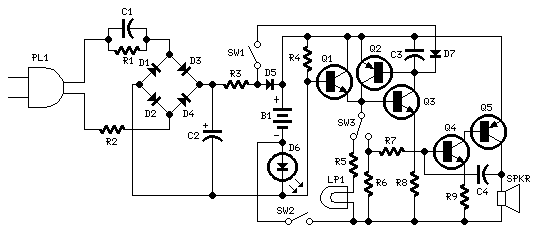
This circuit is permanently plugged into a mains socket and NI-CD batteries are trickle-charged. When a power outage occurs, the lamp automatically illuminates. Instead of illuminating a lamp, an alarm sounder can be chosen. When power supply is restored, the lamp or the alarm is switched-off. A switch provides a "latch-up" function, in order to extend lamp or alarm operation even when power is restored.
The described circuit operates as an uninterruptible power supply (UPS) system designed for emergency lighting or alarm applications. It utilizes nickel-cadmium (Ni-Cd) batteries for energy storage, which are continuously trickle-charged while connected to the mains power. The primary function of this circuit is to detect power outages and automatically activate a lamp or an alarm sounder, ensuring visibility or alertness in the event of a blackout.
The circuit includes a mains input section that connects to an AC power source, which is then rectified and regulated to provide the necessary charging voltage for the Ni-Cd batteries. A diode is typically used to prevent reverse current flow from the batteries back into the mains supply. The charging circuit is designed to maintain the batteries at a full charge without overcharging, often employing a simple voltage regulator or a dedicated battery management IC.
In the event of a power failure, a relay or a solid-state switch is triggered to disconnect the mains supply and connect the batteries to the load (lamp or alarm sounder). This action is often controlled by a comparator circuit that monitors the voltage level of the mains input. If the voltage drops below a certain threshold, indicating a power outage, the comparator activates the relay, switching the load to battery power.
Additionally, a manual switch is incorporated into the circuit to facilitate a "latch-up" function. This allows the user to keep the lamp or alarm activated even after the mains power is restored. The switch can be a simple toggle or push-button type, and it works by maintaining the relay in the closed position until the switch is toggled again. This feature is particularly useful for scenarios where the user may want to keep the alert active for a specified duration after power has been restored.
The circuit design should also include appropriate protection features such as fuses or circuit breakers to safeguard against overcurrent conditions and ensure safe operation. Furthermore, the choice of lamp or alarm sounder can be tailored based on the application's specific requirements, whether for providing light during an outage or alerting occupants of a potential emergency.
Overall, this circuit provides a reliable solution for emergency situations, ensuring that either a light source or an audible alarm is available during power interruptions, enhancing safety and security.This circuit is permanently plugged into a mains socket and NI-CD batteries are trickle-charged. When a power outage occurs, the lamp automatically illuminates. Instead of illuminating a lamp, an alarm sounder can be chosen. When power supply is restored, the lamp or the alarm is switched-off. A switch provides a "latch-up" function, in order to extend lamp or alarm operation even when power is restored. 🔗 External reference
The described circuit operates as an uninterruptible power supply (UPS) system designed for emergency lighting or alarm applications. It utilizes nickel-cadmium (Ni-Cd) batteries for energy storage, which are continuously trickle-charged while connected to the mains power. The primary function of this circuit is to detect power outages and automatically activate a lamp or an alarm sounder, ensuring visibility or alertness in the event of a blackout.
The circuit includes a mains input section that connects to an AC power source, which is then rectified and regulated to provide the necessary charging voltage for the Ni-Cd batteries. A diode is typically used to prevent reverse current flow from the batteries back into the mains supply. The charging circuit is designed to maintain the batteries at a full charge without overcharging, often employing a simple voltage regulator or a dedicated battery management IC.
In the event of a power failure, a relay or a solid-state switch is triggered to disconnect the mains supply and connect the batteries to the load (lamp or alarm sounder). This action is often controlled by a comparator circuit that monitors the voltage level of the mains input. If the voltage drops below a certain threshold, indicating a power outage, the comparator activates the relay, switching the load to battery power.
Additionally, a manual switch is incorporated into the circuit to facilitate a "latch-up" function. This allows the user to keep the lamp or alarm activated even after the mains power is restored. The switch can be a simple toggle or push-button type, and it works by maintaining the relay in the closed position until the switch is toggled again. This feature is particularly useful for scenarios where the user may want to keep the alert active for a specified duration after power has been restored.
The circuit design should also include appropriate protection features such as fuses or circuit breakers to safeguard against overcurrent conditions and ensure safe operation. Furthermore, the choice of lamp or alarm sounder can be tailored based on the application's specific requirements, whether for providing light during an outage or alerting occupants of a potential emergency.
Overall, this circuit provides a reliable solution for emergency situations, ensuring that either a light source or an audible alarm is available during power interruptions, enhancing safety and security.This circuit is permanently plugged into a mains socket and NI-CD batteries are trickle-charged. When a power outage occurs, the lamp automatically illuminates. Instead of illuminating a lamp, an alarm sounder can be chosen. When power supply is restored, the lamp or the alarm is switched-off. A switch provides a "latch-up" function, in order to extend lamp or alarm operation even when power is restored. 🔗 External reference
